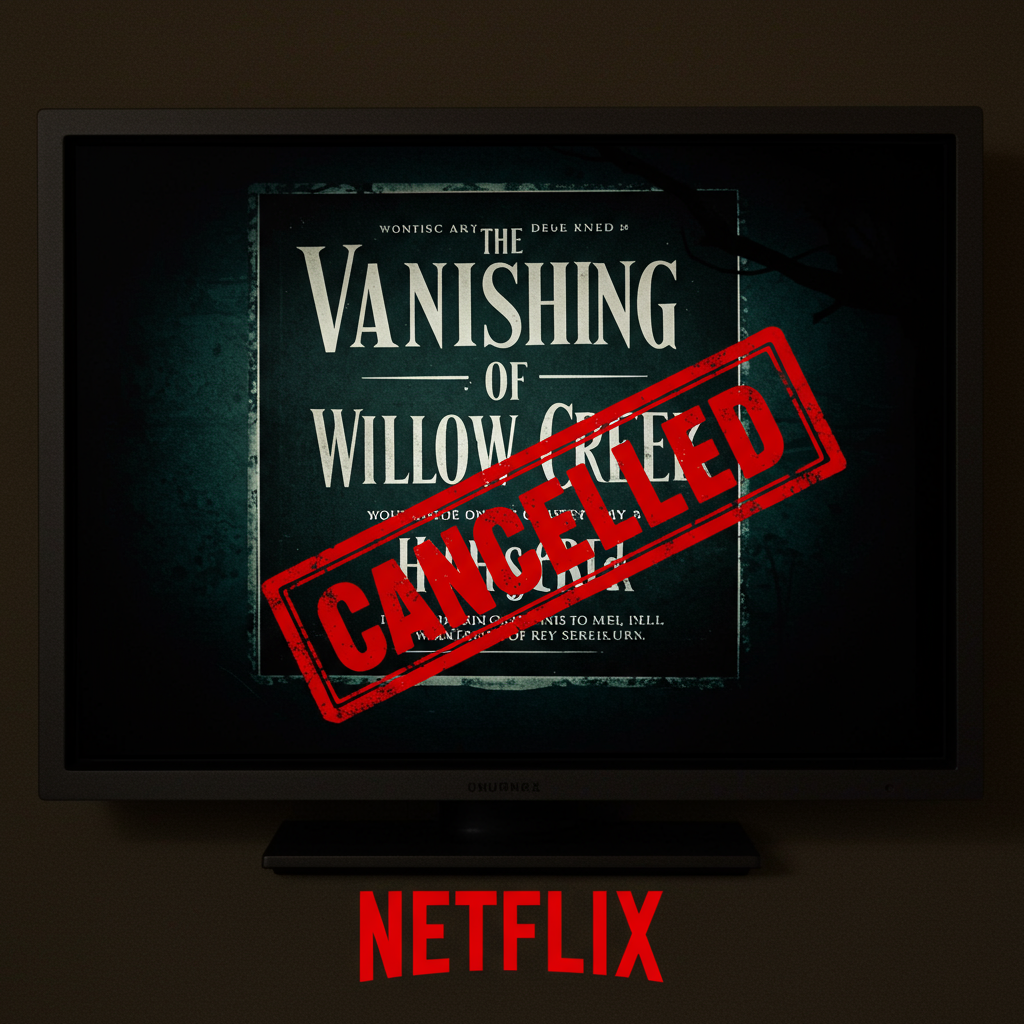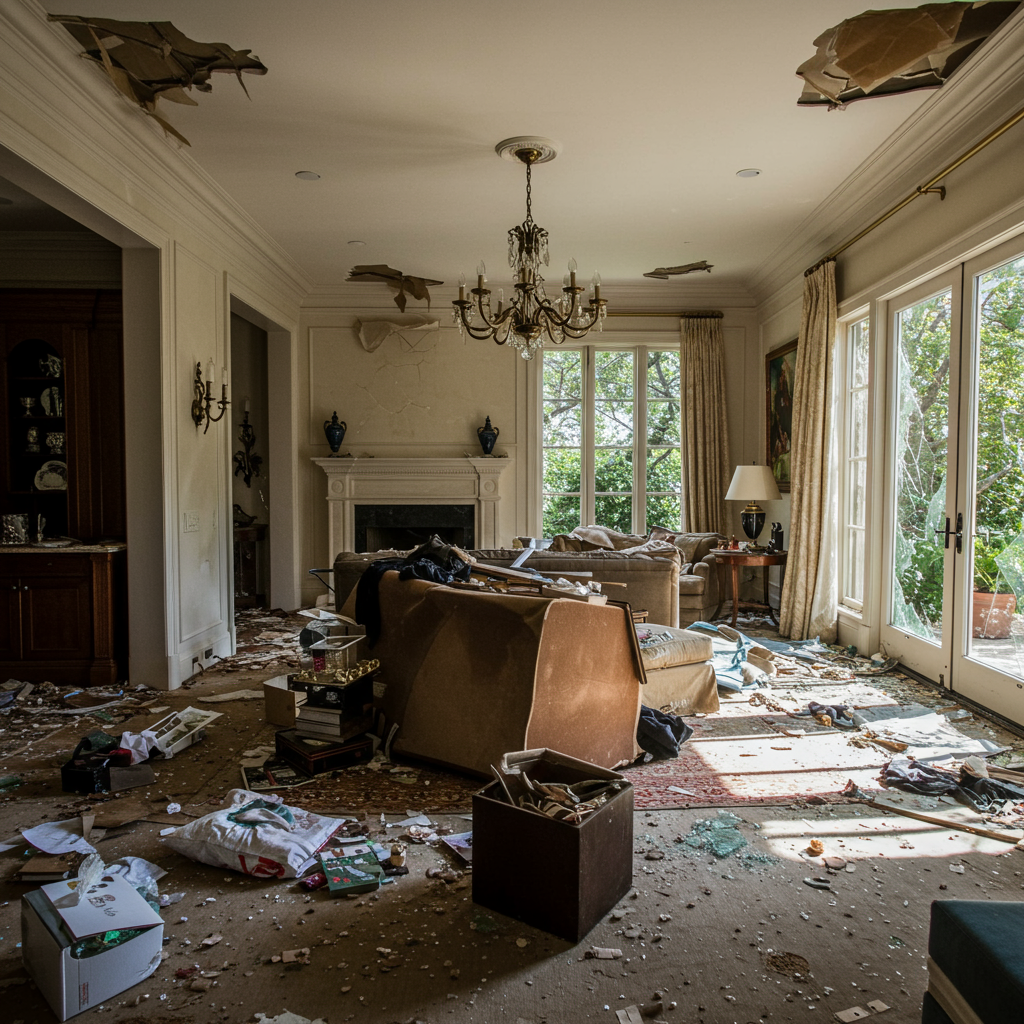netflix has officially shut the door on ‘The Residence’. This decision marks the end of the freshman Shondaland series after just one season. Alongside the mystery show, Netflix also canceled the medical drama ‘Pulse’ this week. While ‘Pulse’ received poor critical reviews from the start, ‘The Residence’ generally earned praise from critics. Despite differing receptions, both shows initially performed well in viewership metrics on the streaming platform. However, strong initial performance and positive reviews weren’t enough to secure a future for the White House-set whodunnit.
‘The Residence’ Showed Early Promise on Netflix
The series premiered on March 20, 2025, quickly making its mark on the Netflix charts. In its debut week, ending March 23, ‘The Residence’ landed at number two globally. It trailed only the massively popular series ‘Adolescence’. The show held onto the second spot the following week. Although its position began to slide afterward, it remained within Netflix’s Global Top 10 shows chart for a total of four weeks. ‘Pulse’, released slightly later on April 3, also spent four weeks in the Global Top 10. This performance suggests ‘The Residence’ found an audience, demonstrating reasonable engagement compared to many new series, though falling short of juggernauts like ‘Adolescence’, which stayed in the top ranks twice as long and is one of Netflix’s most-watched English-language shows ever.
Standing Out: Stellar Cast and Lavish Production
One undeniable strength of ‘The Residence’ was its exceptional ensemble cast. Uzo Aduba led the series as Cordelia Cupp, the self-proclaimed “greatest detective in the world,” delivering a performance widely praised as excellent. Randall Park provided tremendous support. The cast also featured accomplished actors like Giancarlo Esposito, Ken Marino, Isiah Whitlock Jr., and Susan Kelechi Watson, all contributing strong performances. The collective talent assembled for the show was truly terrific. Being produced by Shonda Rhimes’ Shondaland banner also lent significant prestige and expectation to the project from the outset.
Beyond the performances, the production design was a major highlight. The series constructed a near-full, stunning recreation of the White House interiors. This elaborate set was built at Raleigh Studios in Los Angeles. According to Netflix, the design connected 132 rooms across seven stages. It incorporated immense detail, including 10 miles of molding and 200 working doors. The colors were vibrant, and each room felt distinct and luxurious. The sheer scale and detail of the set were truly impressive, possibly even surpassing the real White House in visual appeal. This level of detail underscores a critical point: the show was undeniably expensive to produce.
The High Cost of Prestige in a Changing Streaming Landscape
The lavish White House set, while visually spectacular, came with a significant price tag. Building and maintaining such an intricate environment requires substantial investment. In the current streaming landscape, particularly post-2021, Netflix has become increasingly focused on the “bottom line.” Cost-benefit analysis plays a crucial role in renewal decisions. A show like ‘The Residence’, with its immense production costs, faces a higher bar for success than less expensive programs.
The show’s planned format for a potential second season further complicated the cost equation. The creators intended ‘The Residence’ to become an anthology series. This meant Cordelia Cupp would tackle a new case each season. Unless future cases somehow remained confined to the White House (which seems unlikely given the limited scope for repeated murders there), the expensive, custom-built set would largely go unused in subsequent seasons. This scenario of significant upfront investment for a single season’s primary setting likely weighed heavily in Netflix’s decision-making process when evaluating the feasibility of a second season, despite the show’s initial viewership success. Throwing more money into a show where a key costly asset is becoming obsolete for the planned future format is a difficult financial justification.
The Whodunnit Problem: A Finale That Fell Flat
For all its strengths in casting and production, ‘The Residence’ ultimately stumbled where a mystery series absolutely cannot afford to: the conclusion. A truly great whodunnit allows the viewer to engage with the clues provided throughout the story. The audience should feel they have a realistic chance, however slim, of solving the crime alongside the detective. The season finale of ‘The Residence’ failed this fundamental test. While the show scattered “breadcrumbs” along the way, the sheer complexity and scope of suspects and potential motivations made it practically impossible for a viewer to connect the dots. Arriving at the same conclusion as detective Cupp felt unearned and arbitrary, not the result of clever deduction.
For seven of its eight episodes, the series successfully drew viewers into the sprawling White House setting. It presented a compelling array of suspects and theories. However, the reveal of the killer felt frustratingly un-deducible. Netflix notably sent critics only the first seven episodes initially. While likely intended to protect spoilers, this decision inadvertently shielded the show from reviews of its weakest point. Ending a mystery on an unsolvable or unsatisfying note can severely undermine the viewer’s overall experience and goodwill. It’s a low note to end on, especially for a show hoping for a future.
Narrative Missteps and Unfulfilled Promises
Beyond the core failure of the whodunnit structure in the finale, ‘The Residence’ included several narrative choices that left viewers scratching their heads. After the main case is solved, an extended final scene featuring detective Cupp stopping back at the White House felt particularly anticlimactic. Cupp returns solely to inform the President’s mother-in-law, Nan Cox (a relatively minor character), about the killer’s identity. Nan’s reaction suggested she either already knew or guessed correctly, draining the scene of any revelatory impact. This moment, having “so little to do with anything that’s important to the story,” felt disconnected and pointless, especially compared to other potential concluding scenes, like Cupp finally giving a tour to the young boy who had assisted her earlier.
Another significant point of criticism was a season-long running gag involving Hugh Jackman. While the actor never actually appeared in the show (he declined participation), the narrative repeatedly referenced his presence in the White House. His body double and vocal impressions were featured throughout. This setup created a strong expectation for a payoff – perhaps Jackman would be revealed as the killer, or the gag would lead to a clever twist involving his actual appearance. When the payoff never materialized, the gag felt like a self-imposed letdown. It was an unnecessary distraction that detracted from the central mystery, serving, in a way, as a metaphor for the show’s own potential versus its flawed execution.
Frequently Asked Questions
Why did Netflix cancel ‘The Residence’ despite generally good reviews and viewership?
Netflix canceled ‘The Residence’ likely due to a combination of factors. While it received positive reviews and reached #2 globally for two weeks, spending four weeks total in the Top 10, this performance might not have met Netflix’s internal benchmarks relative to the show’s high cost. The series featured an expensive, elaborate White House set. With plans for Season 2 to become an anthology, this costly set would likely become redundant, making continued investment harder to justify in Netflix’s current cost-conscious environment. Additionally, the critical failure of the season finale’s whodunnit aspect potentially lessened confidence in the show’s future storytelling direction.
Who were some of the notable cast members in ‘The Residence’?
‘The Residence’ boasted a strong ensemble cast. The lead role of detective Cordelia Cupp was played by Uzo Aduba, who was widely praised for her performance. Randall Park was featured in a prominent supporting role. The cast also included other accomplished actors such as Giancarlo Esposito, Ken Marino, Isiah Whitlock Jr., and Susan Kelechi Watson. Many critics highlighted the strength and chemistry of the cast as one of the show’s major assets.
Did ‘The Residence’ finale successfully deliver on its whodunnit premise?
Based on critical analysis within the article, the season finale of ‘The Residence’ did not successfully deliver as a whodunnit. The main criticism is that the show failed to provide sufficient, clearly discernible clues throughout the season to allow viewers to realistically solve the mystery themselves. The final reveal felt frustratingly arbitrary and un-deducible based on the information presented to the audience, undermining the core premise of a mystery series that invites viewer participation in solving the crime.
Conclusion: A Premature End to a Show of Contradictions
The cancellation of ‘The Residence’ is undoubtedly a disappointment for fans and those who appreciated its strengths. It arrived on Netflix with significant backing, a stellar cast, and breathtaking production values thanks to its detailed White House recreation. Its initial chart performance showed it could capture audience attention. However, the show was ultimately a product of contradictions. Its immense promise in casting and visuals was hampered by significant narrative flaws, particularly in a season finale that failed the fundamental requirements of its genre. The decision to make the set so expensive and central for a show planned to shift to an anthology format also seems, in retrospect, like a potential strategic misstep given Netflix’s current economic focus. While ‘The Residence’ was mostly good, its self-inflicted wounds in the finale, coupled with its high cost relative to its viewership trajectory, likely sealed its fate. It leaves us pondering what could have been if the storytelling had matched the caliber of its production and performers.
References
- www.hollywoodreporter.com
- <a href="https://www.imdb.com/de/news/ni65364009/?ref=nmnwr_1″>www.imdb.com
- www.hollywoodreporter.com
- <a href="https://www.imdb.com/news/ni65364009/?ref=nwcart_perm”>www.imdb.com
- time.com



